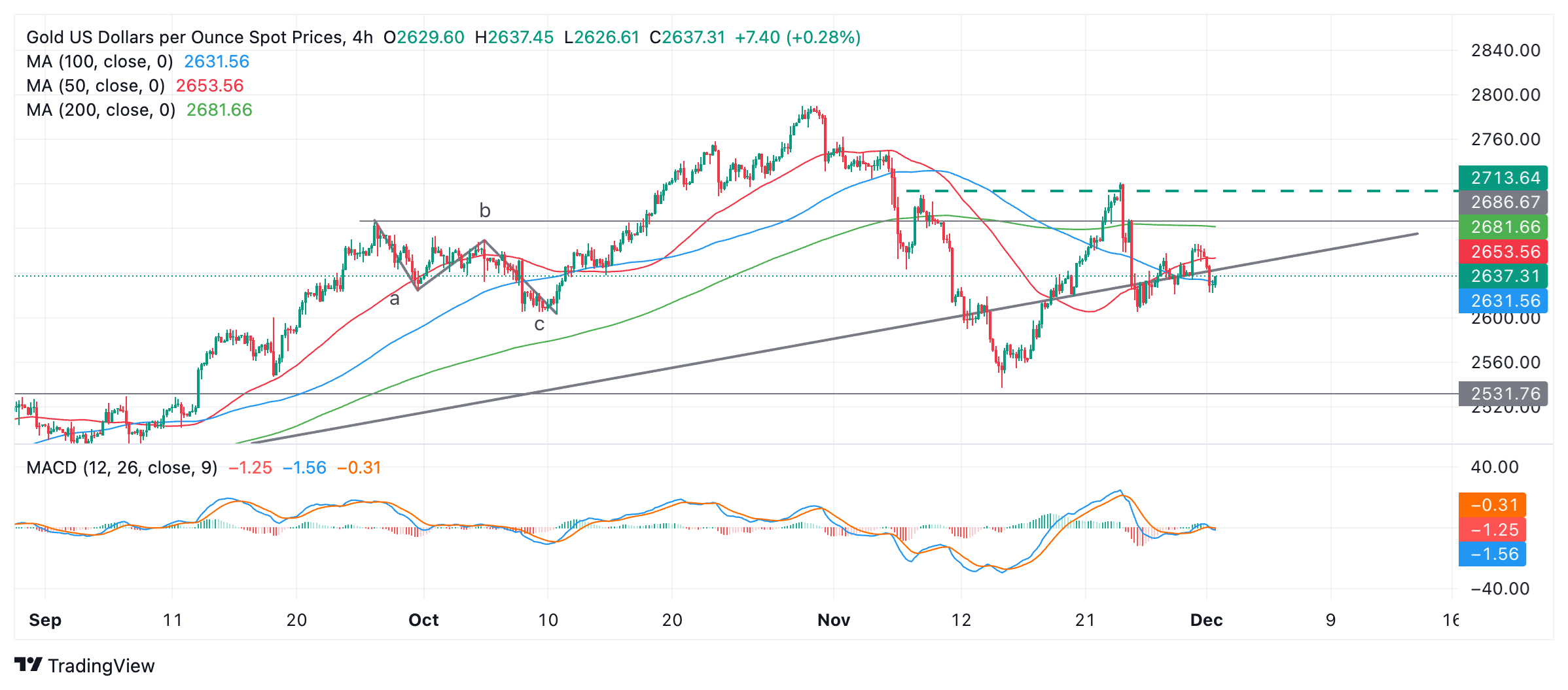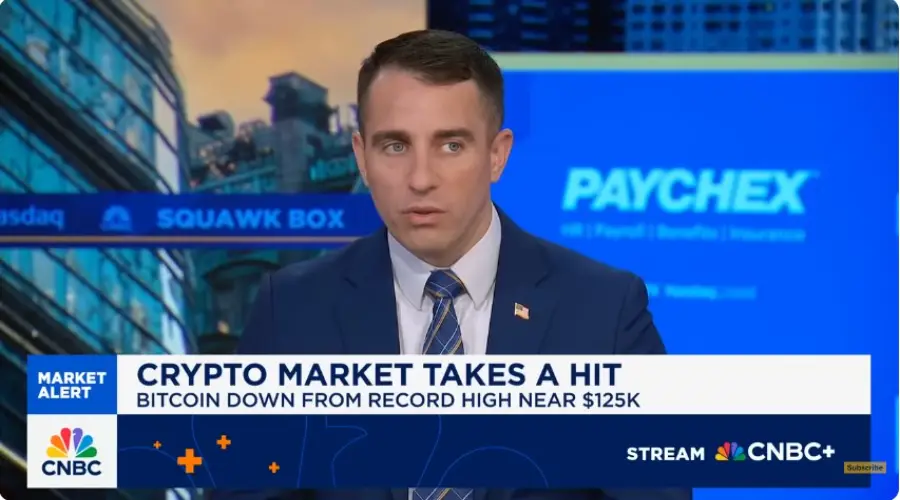- Gold is trading lower on Monday after President-elect Donald Trump threatened the BRICS nations with 100% tariffs.
- Trump warned that he would use tariffs if BRICS tried to replace the USD with its own currency.
- The US Dollar rises, weighing on Gold, although rising geopolitical risk provides flows of support to the yellow metal.
Gold (XAU/USD) falls and trades at $2,630 on Monday due to a stronger US Dollar (USD). However, the downside is limited as geopolitical risks remain elevated, driving safe-haven demand for the precious metal.
Gold retreats at the start of the trading week after President-elect Donald Trump threatened to increase tariffs to 100% on the BRICS trading bloc if they go ahead with plans to replace the USD with their own currency.
His comments strengthened the US Dollar, which tends to negatively impact Gold as the precious metal is primarily priced and traded in USD.
Gold falls due to Trump’s dispute with BRICS
Gold weakens by around 0.80% at the time of writing on Monday after Donald Trump issued a warning to emerging market trading bloc BRICS that he will impose 100% tariffs if they go ahead with plans to replace the US Dollar with its own currency.
“The idea that the BRICS countries are trying to get away from the Dollar while we stand by and watch is OVER,” Trump posted on Truth Social on Saturday afternoon. “We require a commitment from these countries that they will not create a new BRICS currency, support any other currency to replace the powerful US Dollar, or face 100% tariffs and should expect to say goodbye to selling into the wonderful US economy. “he added.
The BRICS – which include Brazil, Russia, India, China, South Africa, Egypt, Iran, the United Arab Emirates and Ethiopia – have been steadily reducing their dependence on the USD as a medium of exchange, using their members’ currencies instead.
It has even been suggested that they could develop their own BRICS currency backed by Gold for trading purposes, replacing the Dollar entirely.
Some BRICS countries, such as China and India, have also been accumulating Gold. This may be because they want to launch a Gold-backed currency to replace the US Dollar.
Trump’s warning threatens to derail his plans if members become fearful of the consequences of a global trade war with the US, and this could also be weighing on the price of gold.
Gold supported by safe haven flows
On the other hand, Gold continues to benefit from an elevated level of geopolitical risk, boosting security flows and acting as a counterweight to the depressing influence of Trump’s words.
Despite agreeing to a ceasefire last week, Lebanese authorities reported an attack by an Israeli military drone on an excavator carrying out fortification work at a military base on the Syrian border on Monday. Additionally, in Gaza, an Israeli strike killed another 15 people, according to Reuters.
In Syria, a civil war has broken out, bringing even more instability to the region, with Turkish-backed rebel forces taking over Syria’s second city, Aleppo.
Meanwhile, French government bonds continue their sell-off in Europe, reaching levels not seen in more than a decade during the sovereign debt crisis. This comes amid increased political risk as the government tries to pass a controversial budget.
French Prime Minister Michel Barnier wants to reduce the deficit through spending cuts, but risks being ousted in a no-confidence vote led by the far-right National Rally party, which opposes the proposed spending cuts.
Technical Analysis: XAU/USD in decline within a sideways market
Gold is trading along a major trend line while continuing its overall development within a range.
XAU/USD 4-hour chart
Gold’s short-term trend is sideways, and given the saying that “the trend is your friend,” the odds favor a continuation of the current mode.
Within this sideways market, the chart appears ready to go lower. The decline from the Nov. 25 high appears incomplete, and despite trendline support, further declines are likely. A break below $2,605 (Nov. 26 low) would confirm a continuation down towards the range lows at $2,530.
The (blue) Moving Average Convergence Divergence (MACD) indicator is also crossing below its red signal line, providing a sell signal. The overall shape of the indicator could indicate further declines on the horizon, supporting the short-term bearish outlook.
Gold FAQs
Gold has played a fundamental role in human history, as it has been widely used as a store of value and medium of exchange. Today, apart from its brilliance and use for jewelry, the precious metal is considered a safe-haven asset, meaning it is considered a good investment in turbulent times. Gold is also considered a hedge against inflation and currency depreciation, since it does not depend on any specific issuer or government.
Central banks are the largest holders of Gold. In their aim to support their currencies in turbulent times, central banks tend to diversify their reserves and purchase Gold to improve the perception of strength of the economy and currency. High Gold reserves can be a source of confidence for the solvency of a country. Central banks added 1,136 tons of gold worth about $70 billion to their reserves in 2022, according to data from the World Gold Council. This is the largest annual purchase since records exist. Central banks in emerging economies such as China, India and Türkiye are rapidly increasing their gold reserves.
Gold has an inverse correlation with the US Dollar and US Treasuries, which are the main reserve and safe haven assets. When the Dollar depreciates, the price of Gold tends to rise, allowing investors and central banks to diversify their assets in turbulent times. Gold is also inversely correlated with risk assets. A rally in the stock market tends to weaken the price of Gold, while sell-offs in riskier markets tend to favor the precious metal.
The price of Gold can move due to a wide range of factors. Geopolitical instability or fear of a deep recession can cause the price of Gold to rise rapidly due to its status as a safe haven asset. As a non-yielding asset, the price of Gold tends to rise when interest rates fall, while rising money prices tend to weigh down the yellow metal. Still, most of the moves depend on how the US Dollar (USD) performs, as the asset is traded in dollars (XAU/USD). A strong Dollar tends to keep the price of Gold in check, while a weaker Dollar is likely to push up Gold prices.
Source: Fx Street
I am Joshua Winder, a senior-level journalist and editor at World Stock Market. I specialize in covering news related to the stock market and economic trends. With more than 8 years of experience in this field, I have become an expert in financial reporting.








